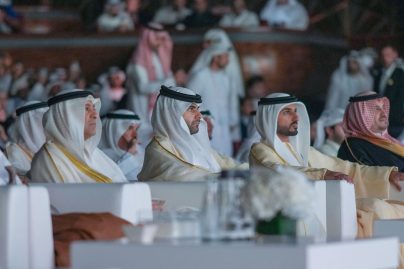Expo 2020 Dubai’s pavilion designed to turn visitors into agents of change
Wed 24 Nov 2021
DUBAI: The green centerpiece of Expo 2020 Dubai, the Sustainability Pavilion is dominated by a 440-feet-wide steel canopy that hosts over 1,000 solar panels, making it one of the most striking architectural designs of the event. It’s also one of the most technologically impressive, capable of producing its own energy, cooling and water.
“We felt that if you can operate a totally net-zero building in one of the world’s most challenging climates, then clearly it can be done anywhere in the world. This was a real opportunity for Dubai to use this global stage and hopefully inspire the millions of visitors,” said Andrew Whalley, chairman of UK studio Grimshaw, which designed the pavilion.
The building can generate up to 4 gigawatt-hours of electricity a year — enough to power about 370 average households — from the photovoltaic panels on the canopy and from hundreds more that are mounted on 18 “Energy Trees” scattered around the pavilion. “They’re made of composite carbon fiber, a material typically used in the aerospace industry and high-performance yachts. To optimize on efficiency, each tree has a motorized gimbal that allows it to track the sun throughout the day,” said Whalley.
The energy produced is used for powering the cooling systems, as well as water harvesting and recycling. Rainwater and dew are collected via the main canopy and an array of “Water Trees,” which provide shade during the day and collect water at night by taking advantage of the sharp temperature drop and the resulting condensation. On-site, gray water is purified and recycled, while black water (from sewage) is cleaned using reed beds, which are natural filtration systems based on aquatic plants.
To keep the exhibition space cool, the building is partially buried.
“We have used our site as a natural insulator, by sinking most of the exhibition space below ground. The remaining space sits under a very heavily insulated landscape roof, which in turn is wrapped with heavy masonry walls built out of reclaimed rocks. All of this provides a strong shield from the outside elements,” said Whalley.
Expo 2020 Dubai is now open, revealing a spectacular array of pavilions, many designed by world-famous architects. The UAE pavilion, designed by Santiago Calatrava, is a sight to behold, shaped like a falcon — the country’s national bird — in flight. The structure is topped by falcon-wing shapes made of carbon fiber and fitted with solar panels.
The striking canopy was inspired by the desert ghaf tree, the national tree of the United Arab Emirates. “It harvests sunlight with its photovoltaic skin and shades everything below, funneling breeze into the sunken courtyard. To enable the canopy to span over the pavilion, it cantilevers 70 meters, but the lightweight lattice construction ensures the structure is extremely efficient, and it uses a very high proportion of recycled steel,” explained Whalley.
The energy and water trees are also inspired by nature, and modeled after the Socotra dragon tree, native to Yemen and known for its umbrella canopy that prevents evaporation — a natural adaptation to the region’s arid conditions.
The building itself is named Terra — after our planet — and like other Expo buildings, it will be permanently repurposed after the event is over.
“The pavilion was actually designed with its long-term function in mind — a public science center dedicated to a sustainable and resilient future for our planet. We then adapted it for the six-month Expo experience, to deal with the very high temperatures of the summer,” said Whalley.
Inside, 64,000 square feet of exhibition space and galleries offer visitors a journey through the Earth’s forests and oceans and pit them against symbols of the human obsession with consumerism, framed as a contributor to the climate crisis. Highlights include a giant angler fish with its mouth choked by plastic pollution and an interactive experience that asks visitors what possession they would save from flooding or burning home, to stress the importance of family and community over consumer goods.
Whalley describes it as “a challenging experience,” but one appreciated by visitors. “The reactions from the visitors was very positive, but more importantly I hope it made them question the world around them — and the immediate challenges we face.”
Source: Agencies

 Apr 25 2024
Apr 25 2024












